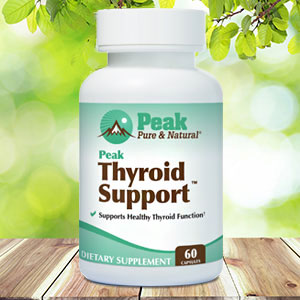Many of us are lucky enough to only experience periodic pain episodes, usually related to some sort of injury. The pain lasts a couple of days, maybe a couple of weeks, but then subsides.
Then there are those who suffer from chronic pain. For them, every day is an ordeal. Pain robs them of simple pleasures the rest of us take for granted — visiting friends and family, playing with the kids or grandkids, traveling or even just working around the house.
What’s really frustrating is doctors don’t really know how to get to the root of the problem. They just write a prescription for pain pills and send the chronic pain sufferer on their way. Well, sometimes those pills don’t work, and when they do, they can cause other problems like addiction.
So, if you suffer from chronic pain, what can you do instead? One answer is surprisingly simple and doesn’t require any expensive pills or procedures…
Exercise boosts pain tolerance
In 2023, researchers in Norway did a study of more than 10,000 adults that found those who were physically active had a higher pain tolerance than those who were sedentary. And the more active they were, the higher their pain tolerance.
They wanted to know whether this finding held true over long periods of time. So they conducted a second study to understand how physical activity could affect the odds of experiencing chronic pain several years later.
The study included almost 7,000 people recruited from the large Tromsø survey, which collected health and lifestyle data over decades.
The researchers obtained information about the participants’ exercise habits during their free time. Then, they examined how well these same people handled cold pain in a laboratory. Later, they checked whether the participants experienced pain lasting three months or more, including pain located in several parts of the body or pain that was more severe.
Related: The omega-3 that blocks pain
Among the participants, 60 percent reported some form of chronic pain, with only 5 percent having severe pain in multiple parts of the body. Few people experienced more severe pain conditions.
“We found that people who were more active in their free time had a lower chance of having various types of chronic pain 7-8 years later,” says doctoral fellow Anders Årnes at UiT The Arctic University of Norway and the University Hospital of North Norway (UNN), one of the researchers behind the study.
“For example, being just a little more active, such as going from light to moderate activity, was associated with a 5 percent lower risk of reporting some form of chronic pain later,” Årnes adds.
Higher activity was associated with a 16 percent reduced risk for severe chronic pain in several places in the body.
How to get started
According to the researchers, the ability to tolerate pain played a role in the apparent protective effect. This explains why being active could lower the risk of having severe chronic pain.
“This suggests that physical activity increases our ability to tolerate pain and may be one of the ways in which activity helps to reduce the risk of severe chronic pain,” Årnes says.
The researchers say when it comes to exercising with chronic pain, physical activity isn’t dangerous per se. But chronic pain sufferers can benefit greatly from having an exercise program that’s adapted so that they don’t put in too much or too little effort. Healthcare professionals experienced in treating chronic pain can often help.
Related: Chronic pain? Swap you NSAID for this vitamin
“A rule of thumb is that there should be no worsening that persists over an extended period of time, but that certain reactions in the time after training can be expected,” the researchers say.
It’s good to start simply, with something like 30 minutes of walking a few times a week. Walking is low impact and can be tolerated by most people, even those with chronic pain. Other low-impact forms of exercise that have proven effective at treating pain include yoga and tai chi.
Just remember the two-hour rule — if the pain is worse two hours after finishing your exercise routine than it was before you started, this indicates you’ve overdone it and should scale back next time.
Sources:
Did you know that physical activity can protect you from chronic pain? — EurekAlert!
Does pain tolerance mediate the effect of physical activity on chronic pain in the general population? The Tromsø Study — Pain
Read full article here




